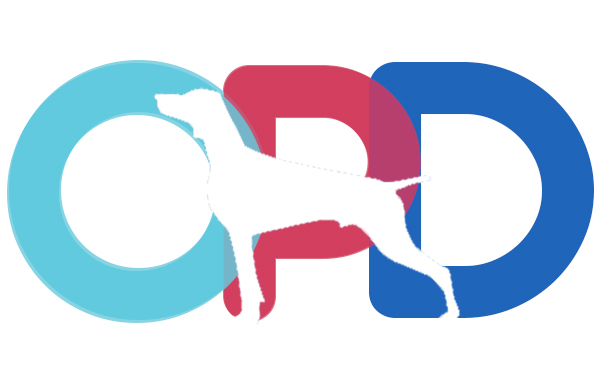Fortunately, it’s easily treated and can be prevented altogether with the proper holistic approach. We’ll cover the following:
- What is distemper & how is it caused?
- Distemper symptoms
- Distemper treatment
- Preventing distemper & the distemper vaccine
What is Distemper & How Is It Caused?
Almost all dogs are exposed to the Canine Distemper Virus. It is contracted from other dogs (or other mammals such as raccoons, coyotes and foxes) through the air or through contact with contaminated items such as dog toys, feces or bones.
Distemper in dogs can lead to serious problems that affect the central nervous system, digestive system and respiratory system. If left untreated, it can be fatal, although advances in treatment – especially holistic treatment – make it a very curable condition.
While older dogs can contract distemper, puppy distemper is much more common between three and six months of age.
Dog Distemper Symptoms
Canine distemper symptoms usually develop in five stages after the virus has been contracted. The first three are indistinguishable from any other common sickness and include symptoms like fever and sluggishness.
The “trademark” distemper symptoms begin two to three weeks after the dog has been infected and include fever, coughing, lethargic behavior, loss of appetite, clear nose discharge progressing to thick and/or yellow discharge, eye conjunctivitis, diarrhea and thick eye discharge and a skin rash on the belly and between the legs.
See our Canine Distemper Symptoms page for additional details.
Treatment for Distemper in Dogs
Conventional veterinary medicine has very little to offer in the way of dog distemper treatment. While a conventional vet may try things like antibiotics or other drugs, they are unlikely to be effective other than to relieve some of the symptoms.
To effectively treat dog distemper, the owner must:
- Fast the dog using proper dog fasting guidelines until his temperature returns to normal (between 100.5 and 101.5 degrees F – 38 to 38.6 degrees C). The dog will need to use all of its energy (including the additional energy required to digest foods) to fight off the disease.
- Keep your dog drinking a lot of water.
- Feed him Vitamin C for dogs, especially while his is fasting. Dr. Pitcairn recommends 250 mg every 2 hours for puppies and small dogs, 500 mg every 2 hours for medium-sized dogs or 1,000 mg every 3 hours for large dogs. After the fever passes, change the timeframe from every 3 hours to every 6 hours and continue giving it until the dog has fully recovered.
- If the dog’s eyes are inflamed, have ulcers and/or have a lot of discharge, follow the standard holistic treatment guidelines for dog eye inflammation.
If you are able to identify the disease early, treating your dog with one or more homeopathic remedies should significantly reduce the severity and duration of the illness.
One of the most effective is distemperinum which is known as a homeopathic nosode (see our Dog Distemper Vaccine & Prevention page for more about this amazing remedy). It’s available as a standalone homeopathic remedy or in a premade solution such as Vi-Pro Plus from PetAlive.
You can also work with your local holistic veterinarian to evaluate other holistic treatments, including homeopathic remedies like Pulsatilla, Arsenicum, Hydrastis or another nosode like Psorinum.
In addition to Vitamin C, other oral or injectable vitamins may be recommended, including B-12 or Vitamin B complex for dogs.
Prevention of Distemper in Dogs & the Distemper Vaccine
The distemper vaccine is effective and necessary, even for the most holistic-minded of us. The question becomes when and how often it’s appropriate.
See our Canine Distemper Vaccine & Prevention page for more information.
Do you believe in holistic pet care? If so, please tell your friends about us. Thank you for supporting our efforts!
